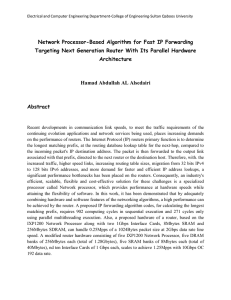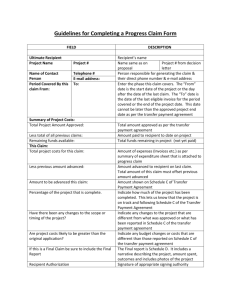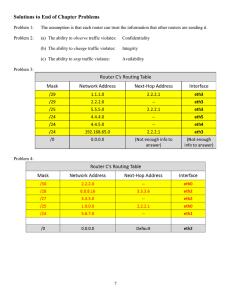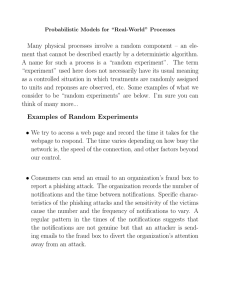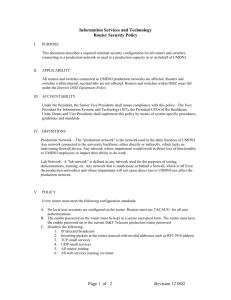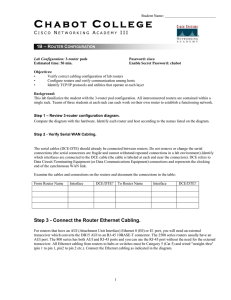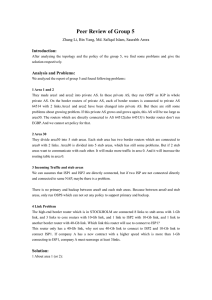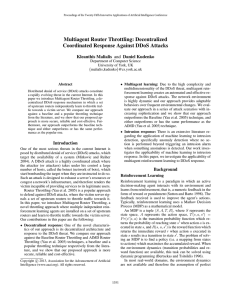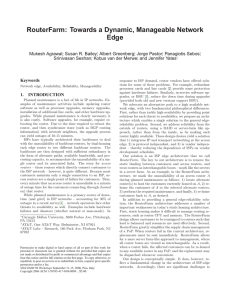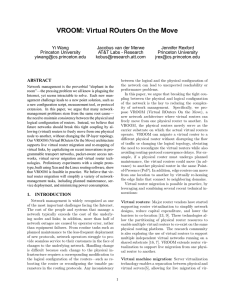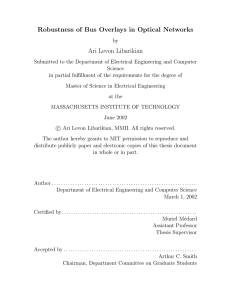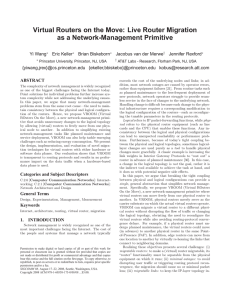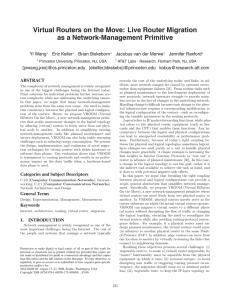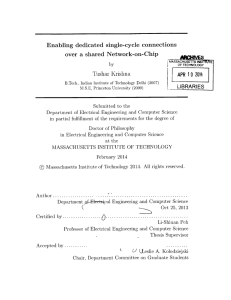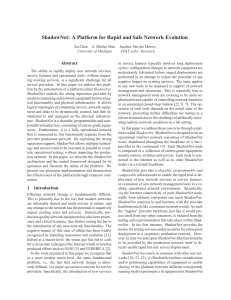Network Routers Example
advertisement
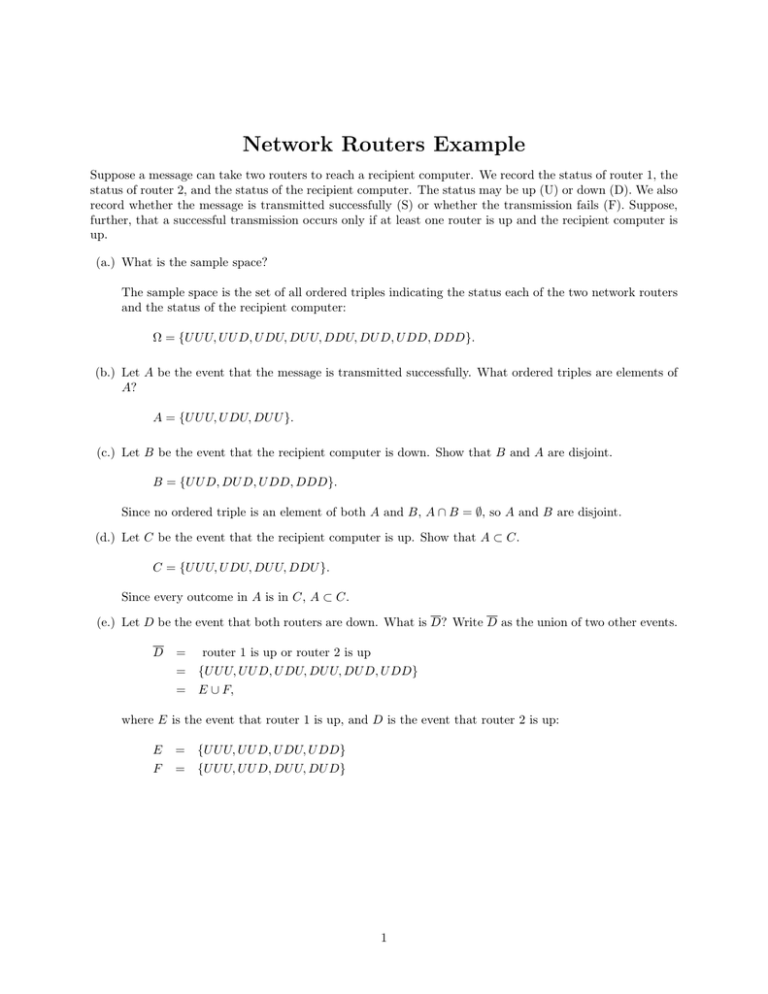
Network Routers Example
Suppose a message can take two routers to reach a recipient computer. We record the status of router 1, the
status of router 2, and the status of the recipient computer. The status may be up (U) or down (D). We also
record whether the message is transmitted successfully (S) or whether the transmission fails (F). Suppose,
further, that a successful transmission occurs only if at least one router is up and the recipient computer is
up.
(a.) What is the sample space?
The sample space is the set of all ordered triples indicating the status each of the two network routers
and the status of the recipient computer:
Ω = {U U U, U U D, U DU, DU U, DDU, DU D, U DD, DDD}.
(b.) Let A be the event that the message is transmitted successfully. What ordered triples are elements of
A?
A = {U U U, U DU, DU U }.
(c.) Let B be the event that the recipient computer is down. Show that B and A are disjoint.
B = {U U D, DU D, U DD, DDD}.
Since no ordered triple is an element of both A and B, A ∩ B = ∅, so A and B are disjoint.
(d.) Let C be the event that the recipient computer is up. Show that A ⊂ C.
C = {U U U, U DU, DU U, DDU }.
Since every outcome in A is in C, A ⊂ C.
(e.) Let D be the event that both routers are down. What is D? Write D as the union of two other events.
D
= router 1 is up or router 2 is up
= {U U U, U U D, U DU, DU U, DU D, U DD}
= E ∪ F,
where E is the event that router 1 is up, and D is the event that router 2 is up:
E
F
= {U U U, U U D, U DU, U DD}
= {U U U, U U D, DU U, DU D}
1


